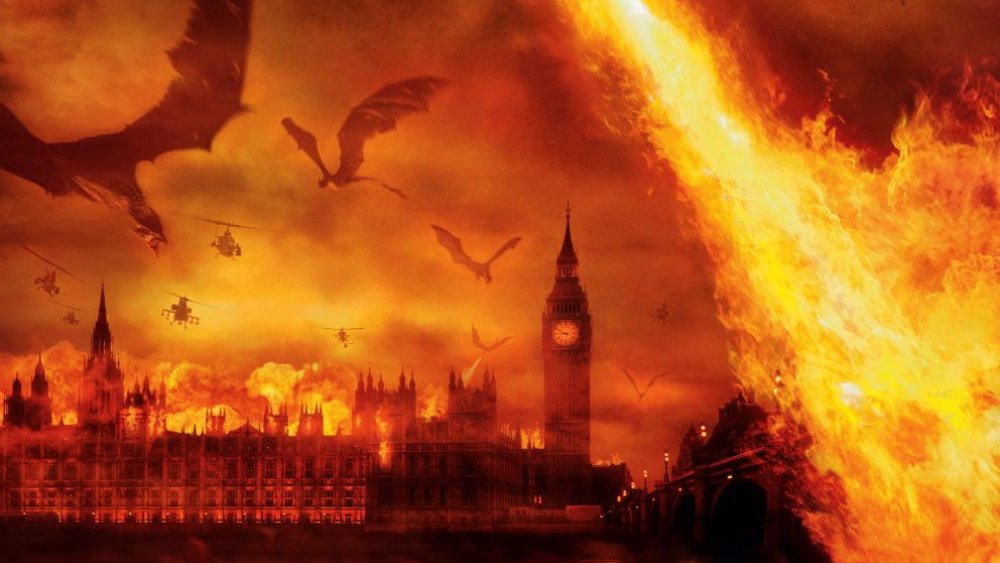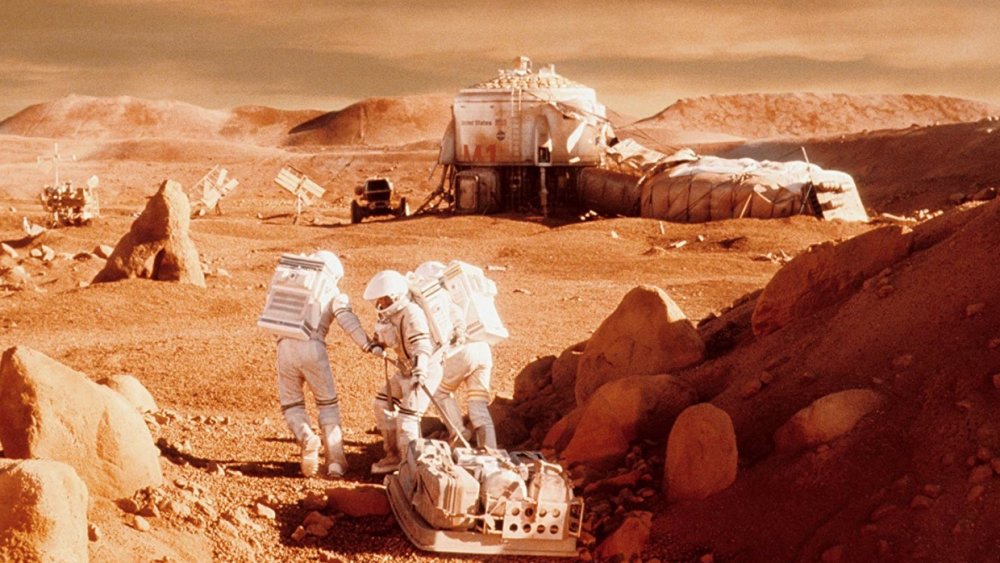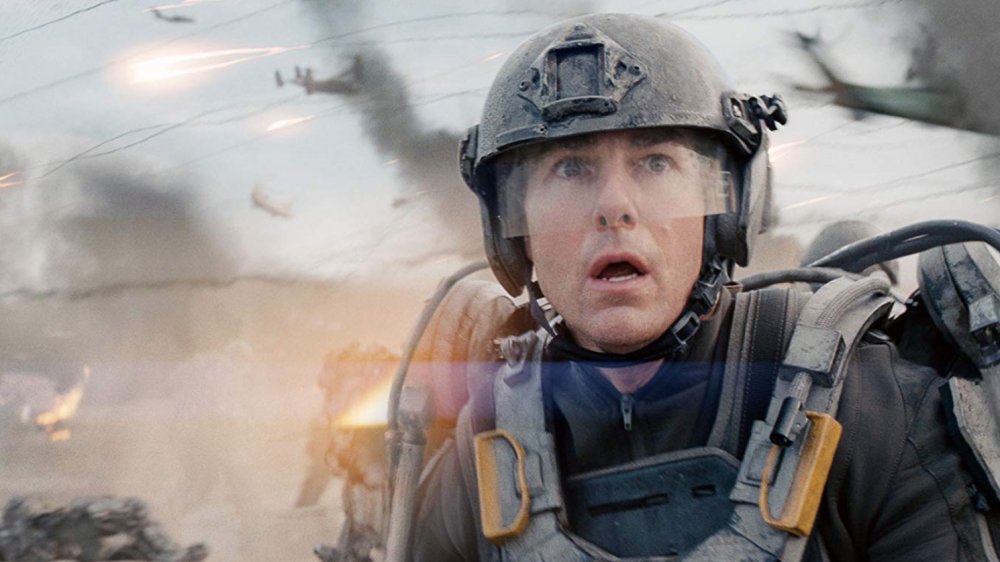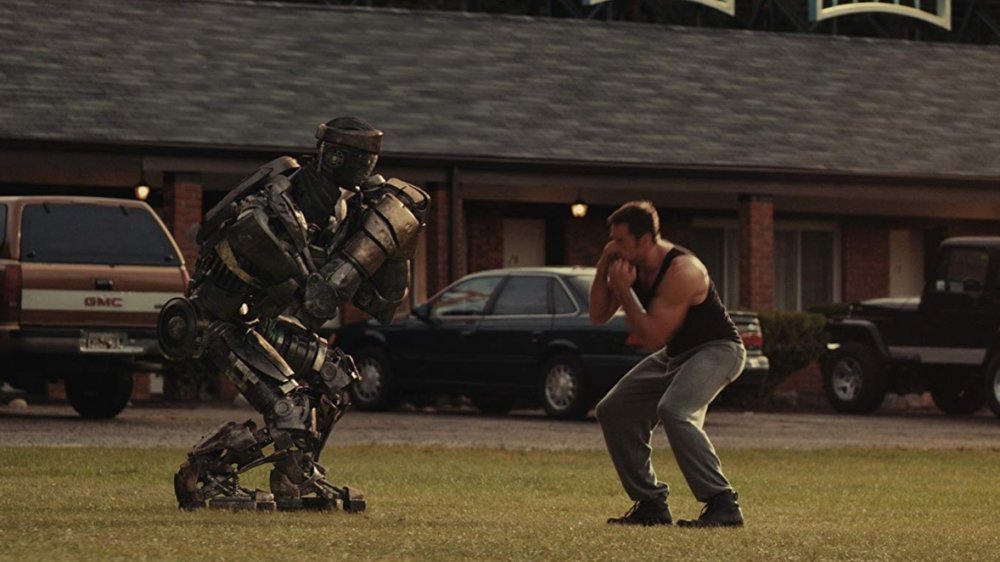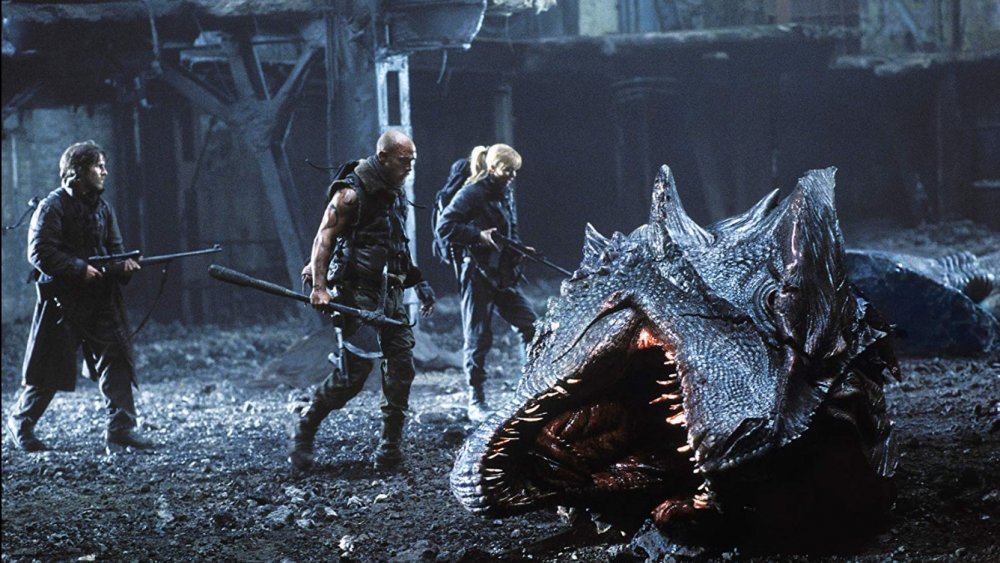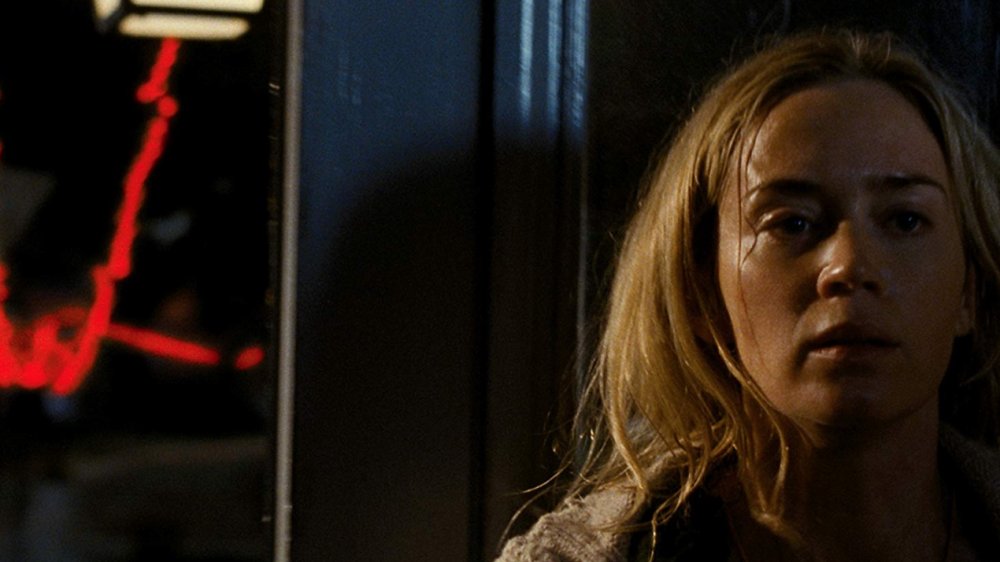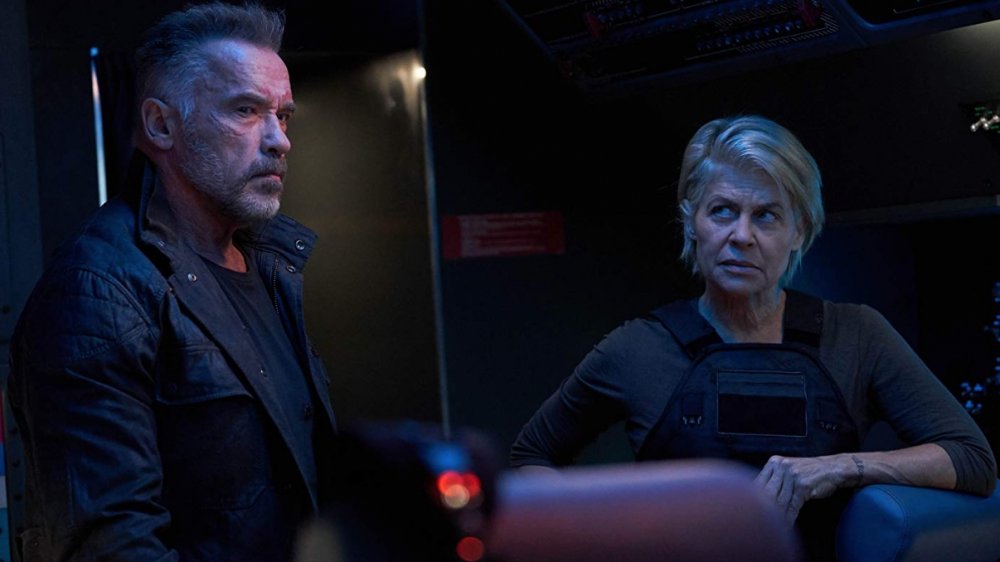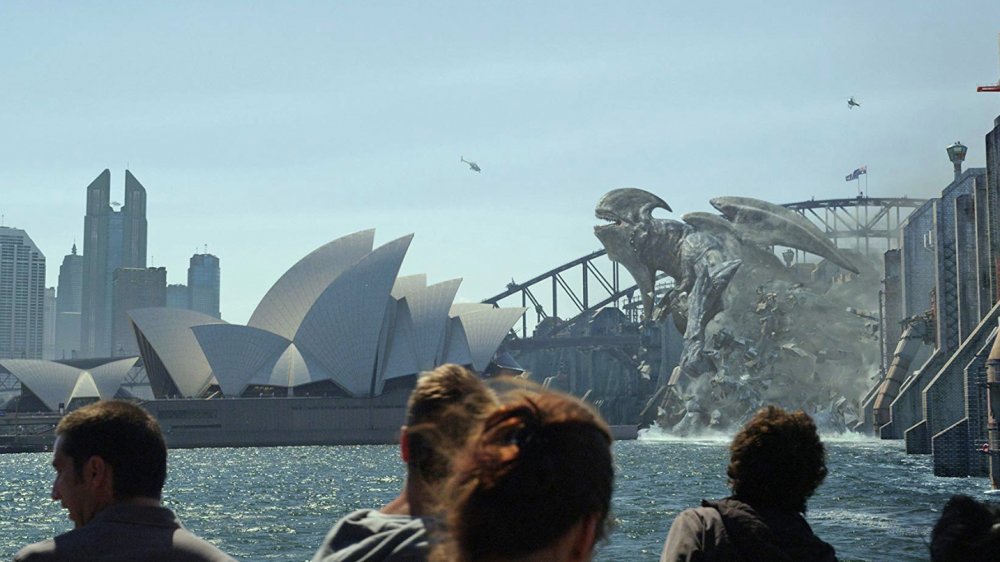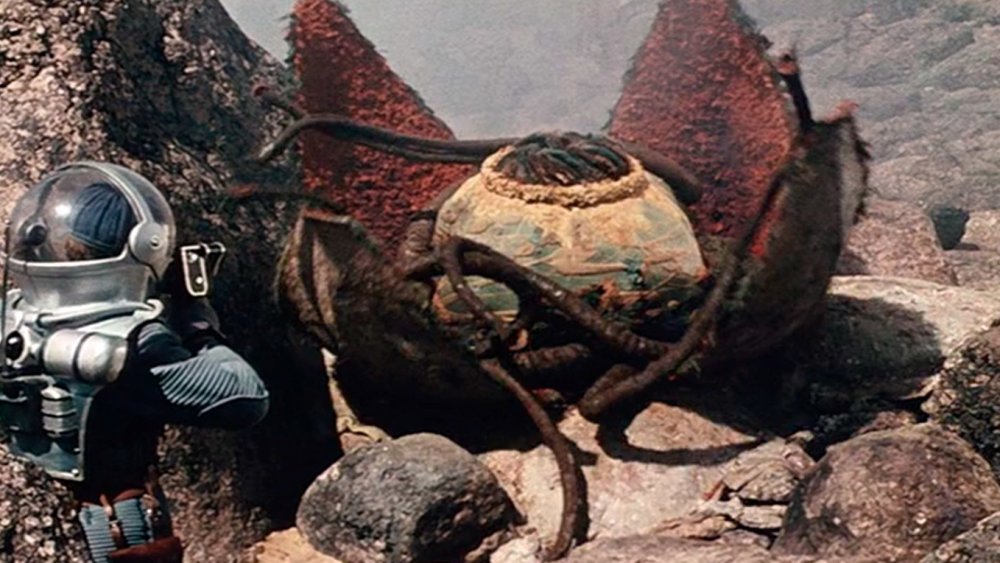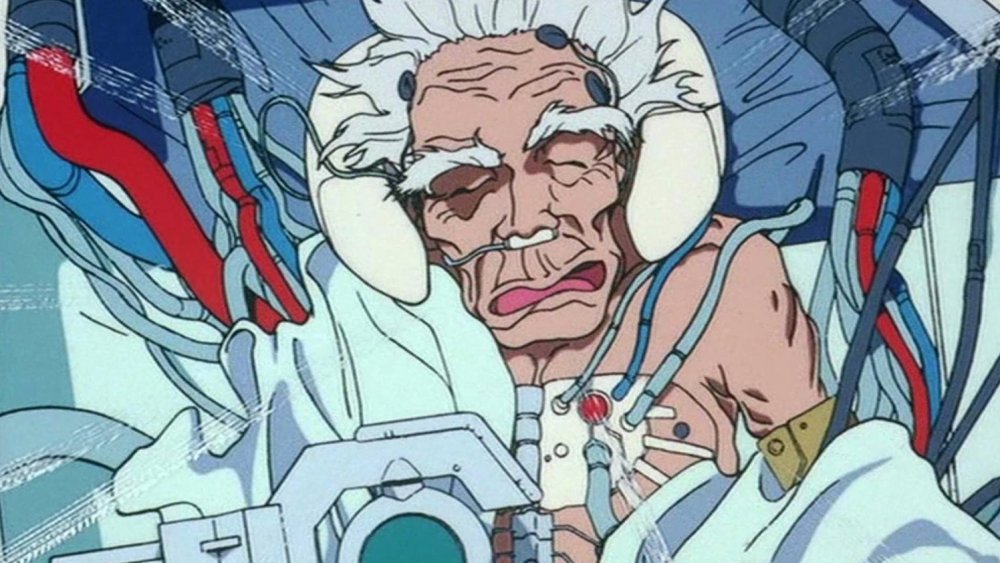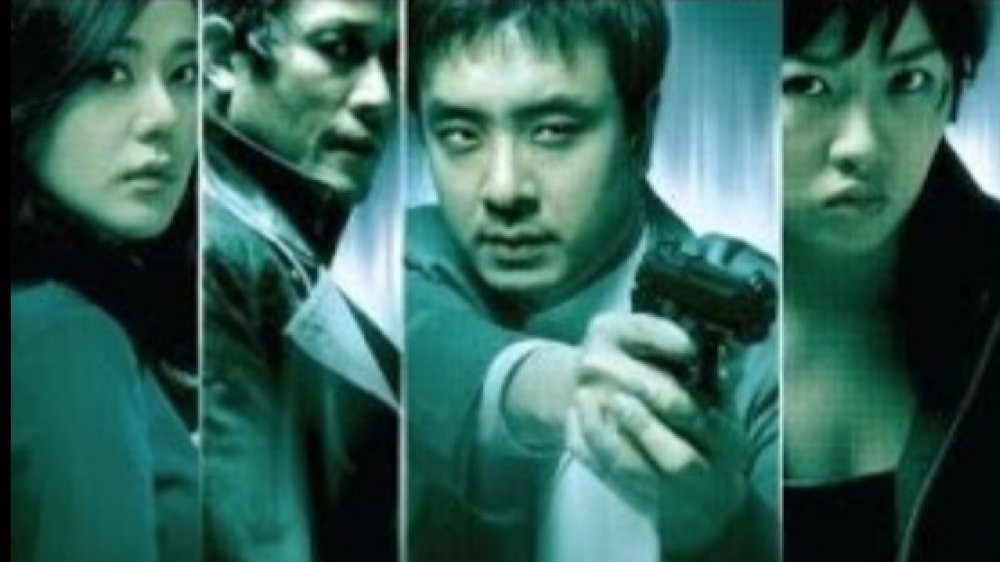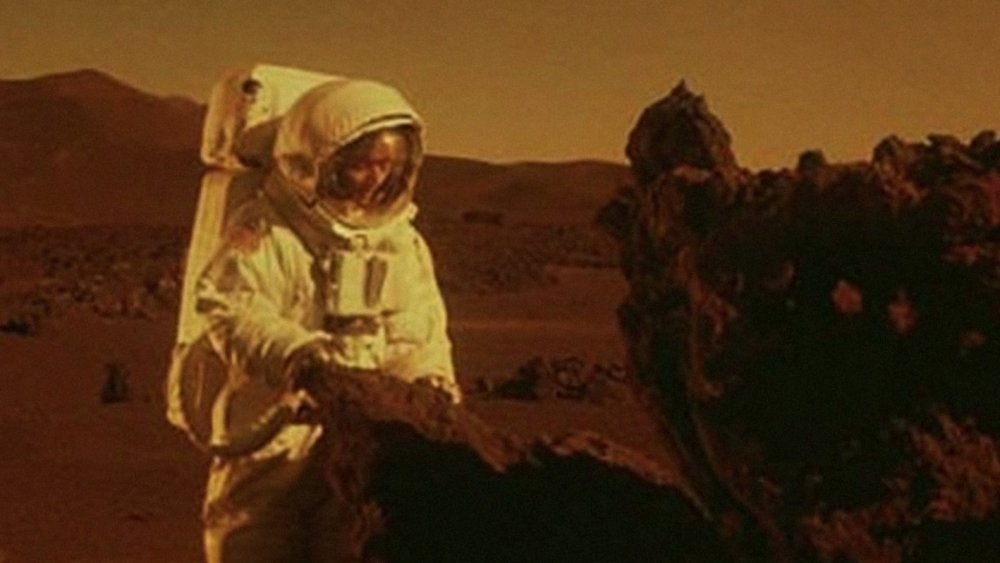What These Movies Predicted About 2020
2020 is an important year for many reasons. It's the start of a new decade, a leap year, features the first palindrome day in centuries, and is a presidential election year in the United States. Most significant, however, is that 2020 is the year we're taken over by fire-breathing dragons, skyscraper-sized kaiju, noise-sensitive, man-eating aliens, and evil, time-traveling robot assassins.
Wait, what? Yes, according to the movies (we probably should have added that caveat), 2020 is the most important year since, well, 2019! Frankly, we were kind of surprised by the number of movies set in 2020. If you're like us, you rarely pay attention to the exact year a movie is set in, only noting that it takes place sometime in the future. Well, it turns out the future is now, which makes it a great time to take a look back and see what filmmakers predicted about 2020! Unsurprisingly, most of these predictions are dire-to-apocalyptic, and quite a few throw monsters into the mix — but rest assured, there are a bright spots among all of the fire and brimstone. From revolutions to robots, here are what these movies predicted about 2020!
Mission To Mars predicted we'd reach the red planet
Studios were obsessed with Mars at the start of the new millennium, though movies about the red planet ultimately failed to make green. Walt Disney struck first, releasing Mission To Mars on March 6, 2000, while Warner Brothers released Red Planet five months later on November 10, 2000 — but both failed to impress critics or moviegoers. Red Planet bombed big time, banking just $33 million worldwide on a $80 million budget, a failure that put a significant drag on Val Kilmer's career. Mission To Mars benefited slightly from coming out first, though it still only netted $110 million worldwide on a $100 million budget.
Mission to Mars is set in 2020, which in 2000 seemed like a reasonable time frame for manned spaceflight to Mars — after all, NASA had launched the Mars Climate Orbiter only one year prior. But today, humanity is still a long way from setting foot on the red planet, though sending astronauts to the moon by 2024 and to Mars within the next decade "by any means necessary" remains a priority for NASA. Alas, no amount of monetary support could have saved Mission To Mars. Despite starring Gary Sinise and Tim Robbins and being directed by Brian De Palma, this sci-fi suspense story about the first manned mission to Mars has a blandness that killed its chances with critics, who savaged it as a shallow spectacle. 2001: A Space Odyssey this was not.
2020 takes Tom Cruise to the Edge of Tomorrow
The future is hard to predict, but there is one thing you can guarantee: Tom Cruise will always be there to save the day. Released in 2014 and set in 2020, Edge of Tomorrow stars Cruise as Major Cage, an officer who has never seen combat suddenly thrust into battle against a malicious and undefeated alien race. Something strange is afoot with Major Cage, however — upon dying in a failed invasion attempt, he wakes up the day before the battle, his memory of what's coming intact. We'd make the prerequisite Independence Day meets Groundhog Day joke, but it's been done at least as many times as Cruise comes back to life in this movie.
The film was a hit with critics, who celebrated Edge of Tomorrow's sense of humor, thrilling heroics, and intriguing plot. Moviegoers came out in force, ultimately netting the film a $100 domestic and $370 million worldwide gross on a $178 million budget, and spurring development of an Edge of Tomorrow sequel. As of 2020, aliens have not attacked Earth and human beings are not capable of coming back to life over and over again. But hey, at least we're prepared.
2020: The year Wolverine teaches a robot to box
Hugh Jackman might be most famous for playing Wolverine, whose skeleton is made of the make-believe metal adamantium, but 2011 saw him play coach to a robot made of steel. Real Steel is set in 2020 and imagines a world in which robot boxing is the most popular sport. Jackman plays Charlie Kenton, a washed-up former pugilist whose career hit the skids once robots replaced humans in the sport. Bitter and at rock bottom, Charlie gets one last shot at a comeback when he and his son take in a discarded robot and turn it into a contender.
Despite the film's somewhat silly premise, Real Steel won critics and audiences over, making $85 million domestically and $299 worldwide. Not too shabby, especially for a movie without Jackman's musical theater chops or his trademark X-man in play. Despite what seems like a far-fetched premise, Real Steel was actually both ahead of its time — and behind it. Discovery Channel premiered its robot-fighting show Battlebots in 2000, 11 years before Real Steel came out, while robots are likely to be present at a middle or high school near you. So far as we know, none of these creations dream of a boxing career — though the robot uprising might be closer than we think.
2020 goes up in flames in Reign of Fire
Between cataclysmic climate change and partisan political battles, lots of commentators like to say the world is on fire in 2020. Well, in 2002, Reign of Fire predicted the world would literally be on fire in 2020 and for good reason — it was taken over by dragons! That's right, fire-breathing, medieval-style dragons straight out of Lord of the Rings, Game of Thrones, or Dungeons & Dragons. Frankly, the idea of a movie about a dystopian future ruled by fire-breathing dragons, especially one starring Matthew McConaughey, Christian Bale, and Gerard Butler, sounds impossible to screw up. Unfortunately, these filmmakers managed it.
Despite its wealth of talent and killer premise, Reign of Fire fizzled like a damp firework with critics. Additionally, the competitive summer movie season left it little room to breathe, and it only managed to earn $42 million domestically and $82 million worldwide on a modest $60 million budget. Obviously the world has not been overtaken by dragons, cool as that would be, and the reason appears to be simple: dragons could not possibly exist. Right? Not so fast. While the dragons of myth and legend (especially highly intelligent, greedy, gold-loving dragons) are highly improbable, a massive, winged reptile that expels something akin to flames from its mouth could have evolved naturally...in theory. If it ever happens in real life, we know who to call: Matthew McConaughey.
This sci-fi horror pic predicted 2020 would be A Quiet Place
Make sure you're not reading this out loud — the aliens may be listening. Just kidding – the sound-sensitive monsters of A Quiet Place, one of 2018's most terrifying films, don't actually exist, and for that we can be grateful. Set in 2020, A Quiet Place imagines a bleak future in which the planet has been overtaken by massive, reptilian monsters that attack anything that makes a sound.
Despite a setup right out of a cheesy 1950s-style creature feature, the film rose far above its genre to become one of 2018's surprise hits. Much of this was thanks to deft direction and John Krasinski and Emily Blunt's honest portrayal of parents in an impossible situation. Critics adored its innovative approach, and audiences agreed: A Quiet Place opened to $50 million, nearly three times its $17 million budget, on its way to a $188 million domestic and $340 million worldwide gross. A Quiet Place's success was pretty simple — it's really darn scary. Out of all the apocalyptic scenarios predicted for 2020, this one might be the one that freaks us out the most. At least with dragons, Kaiju, and Terminators, you can talk! A future where you have to play Monopoly with pieces of fabric? No thank you.
Terminator predicted a dark fate for humanity in 2020
Terminator: Dark Fate was released in late 2019 and set in 2020 — its creators were, apparently, super eager about getting to the post-apocalyptic future. Despite reuniting T2: Judgment Day's stars Arnold Schwarzenegger and Linda Hamilton, bringing back series creator James Cameron as producer, and earning decent enough reviews, audiences were unimpressed with Dark Fate. Its domestic opening brought in a mere $29 million, on its way to a $62 million domestic and $261 million worldwide gross on a $185 million budget.
Thankfully this movie doesn't even try to fit in with the convoluted time-travel madness of the previous Terminator films, instead picking up more than two decades after the events of the universally loved T2: Judgment Day. Once again an evil robot from the future travels back in time to kill an innocent young woman, this time in the year 2020. It's a Terminator movie in the most classic sense, so if you have even a passing familiarity with the franchise, you have a pretty good idea of what goes down. Fortunately, there has never been a robot uprising, though there's always the chance that one could come to pass. Whether or not these evil robots will speak in an Austrian accent remains to be seen.
The apocalypse is cancelled in 2020
Despite its delightfully simple setup (giant robots fight giant monsters!), Pacific Rim actually takes place in a few different time periods. In 2013, a breach opens at the bottom of the Pacific Ocean, releasing skyscraper-sized monsters known as Kaiju upon an unprepared Earth. The bulk of the film takes place in 2025, as humanity mounts a counter-offensive against the Kaiju in an attempt to seal the breach and safeguard the planet. However, a key plot point takes place in 2020, when the film's main hero Raleigh Becket loses his brother/ co-pilot Yancy to a Kaiju known as "Knifehead." Devastated, Raleigh leaves the fight behind until 2025, when he returns to fight alongside co-pilot Mako Mori.
While we applaud director Guillermo Del Toro's imagination, his powers of prediction were a bit off, as 2013 came and went without any Kaiju entering through inter-dimensional portals in the Pacific Ocean. But how plausible is such a scenario anyway? Not very. Blame physics. Weight goes up according to volume, but limb strength increases according to cross-sectional area. Put in layman's terms, Godzilla-sized monsters would collapse under their own weight. Despite the shady science, Pacific Rim impressed critics and earned a decent $101 million domestically, $411 million worldwide on a $190 million budget, ultimately garnering a sequel: Pacific Rim: Uprising.
A dubbed Soviet space-dino movie from the 1960s
Voyage To The Prehistoric Planet is obscure, but don't let that fool you into thinking it isn't worth watching: This is a movie with space dinosaurs. Released in 1965 and set in 2020, this film was cobbled together by director Roger Corman, who took footage from the Soviet sci-fi Planeta Bur (Planet of Storms), re-edited and dubbed it, and clumsily inserted new footage of Basil Rathbone. Rathbone plays Professor Hartman of Lunar Station 7, a moon base from which a crew is sent to Venus. You may remember from Astronomy 101 that Venus' atmosphere is mostly composed of carbon dioxide, a greenhouse gas, making the planet so hot it's inhospitable to life. Turns out your science teacher was wrong. While Venus is hot enough to melt lead, it's not hot enough to melt dinosaurs!
Voyage To The Prehistoric Planet imagines a Venus that is populated by prehistoric beasts, who attack the crew from Lunar Station 7 while Prof. Hartman watches helplessly from the Command Station (because that's the only new set Corman was willing to pay for). While we admire recycling, Voyage To The Prehistoric Planet's recycled footage failed to make green, leaving the film a fascinating failure instead of an actual success. Today, it is part of the public domain, free to watch online as part of the Internet Archive. None of its predictions have come to pass, thankfully — though admittedly, dinosaurs on Venus would be pretty cool.
This 1991 sci-fi anime has not aged one bit
Released in 1991 and set in 2020, Roujin Z imagines a startling vision of the future in which the infirm and elderly are treated not as human beings, but as nuisances — a troubling depiction that remains rooted in the real world. In this anime film, an elderly man becomes the first patient to utilize a revolutionary robotic hospital bed which promises to meet all of his needs, from food and medicine to entertainment. While the robotic hospital bed works fine at first, it begins to mirror the dying widower's violent impulses and becomes possessed by the spirit of his dead wife, leading to him breaking out from the hospital.
My Neighbor Totoro this movie most certainly is not not. Roujin Z is a lesser-known anime film, but it's nevertheless a deeply disturbing sci-fi masterpiece that strikes close to home. America's population is rapidly aging, with the elderly projected to soon outnumber children, a generational change that promises to bring a host of challenges for the healthcare industry and the world at large. Frankly, the idea of a robotic hospital bed that meets all of a patient's needs sounds pretty plausible in the near future, though we're hoping it will be ghost-proof.
Yesterday predicted a unified Korea in 2002
No, not the 2019 Danny Boyle movie about a world in which The Beatles never existed. This Yesterday is a South Korean film released in 2002 from director Yun-su Jeon that imagines a unified Korea in 2020. The film follows a high-profile forensics investigator who teams up with an overworked police officer to track down a serial killer known as "Goliath," setting into motion a series of events that help authorities solve a 30-year old mystery. So kind of like Seven mixed with Chinatown, but set in a futuristic Korea that is no longer divided along the 38th parallel.
Despite its compelling premise, the movie reeks of direct-to-DVD-ness. Its most interesting idea — the idea of a unified Korea — is never really explored, as the movie is more interested in the boilerplate cat-and-mouse story it never tells well. The what, when and why of North and South Korea coming back together is simply taken for granted, leading one to wonder why it's even an element of the film. Either way, this Earth-shattering political reunification hasn't happened.
Stranded imagines Johnny Ramone going to Mars
Don't let the big names attached to Mission to Mars and Red Planet fool you — it wasn't just major Hollywood studios that were imagining a trip to our planetary neighbor near the start of the millennium. 2001 saw indie filmmaker María Lidón release Stranded, a film that imagines 2020's first manned mission to Mars, which, of course, goes horribly awry when the five-person crew crash lands. Despite its noticeably low production value, the film has high ambitions. With only enough food and air to support two people (which begs the question: Why would you send five people to Mars with only enough supplies for two?) three of the astronauts journey out onto the red planet hoping to find the means to survive. The film features a talented cast, most notably punk legend Johnny Ramone. Those performances wasn't enough to help this film, however, and it remains an obscure curiosity. While its vision of a manned mission to Mars has not come to pass, we hope the first voyage to the red planet has the lead guitarist on "Blitzkrieg Bop" on board.
